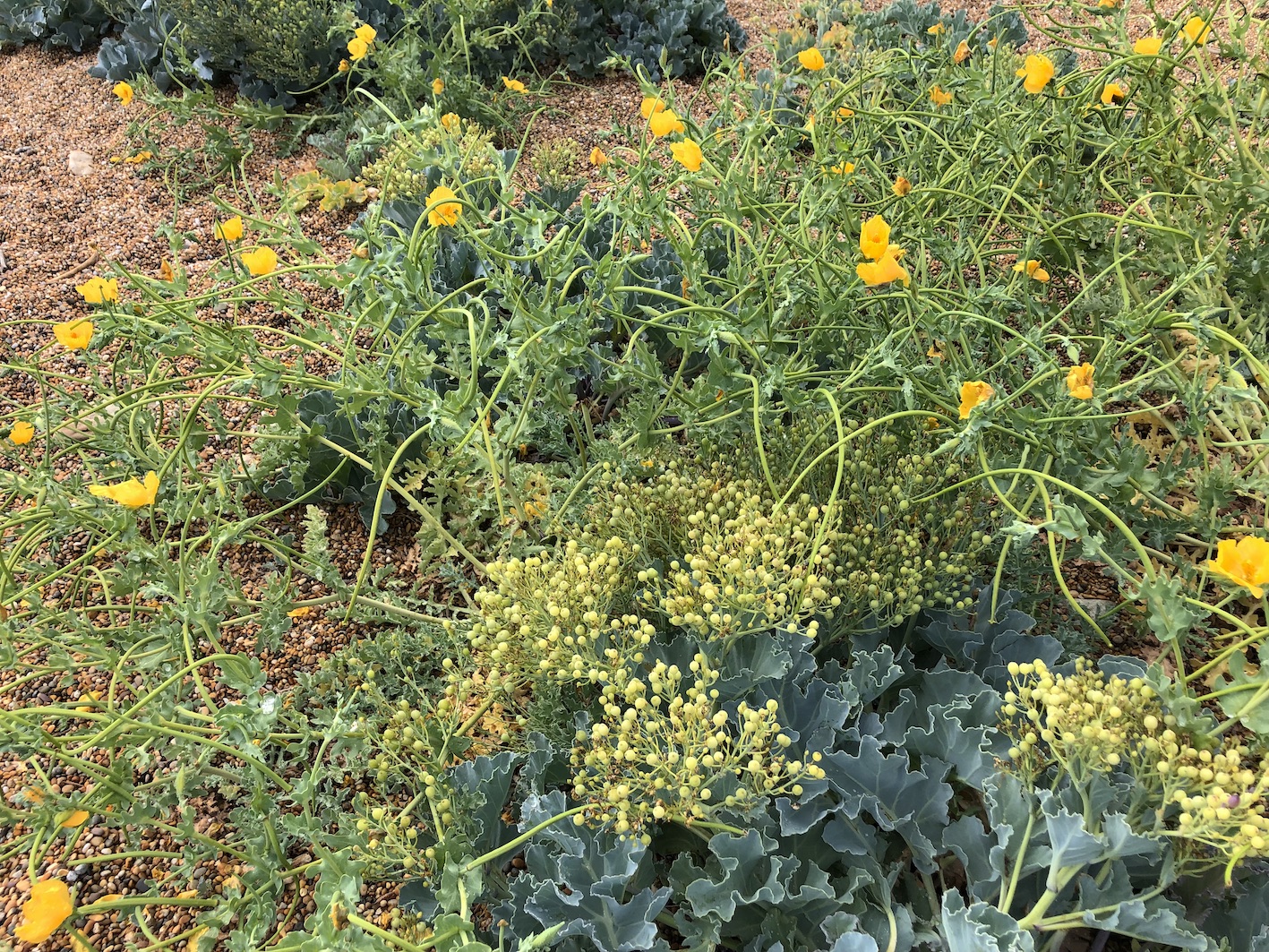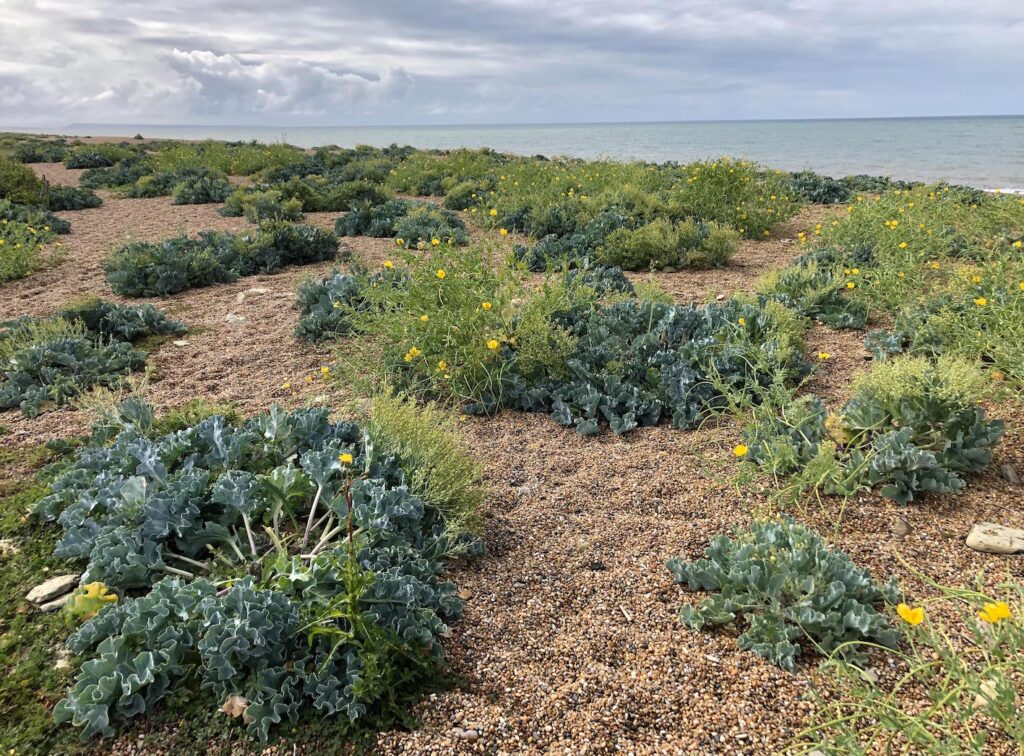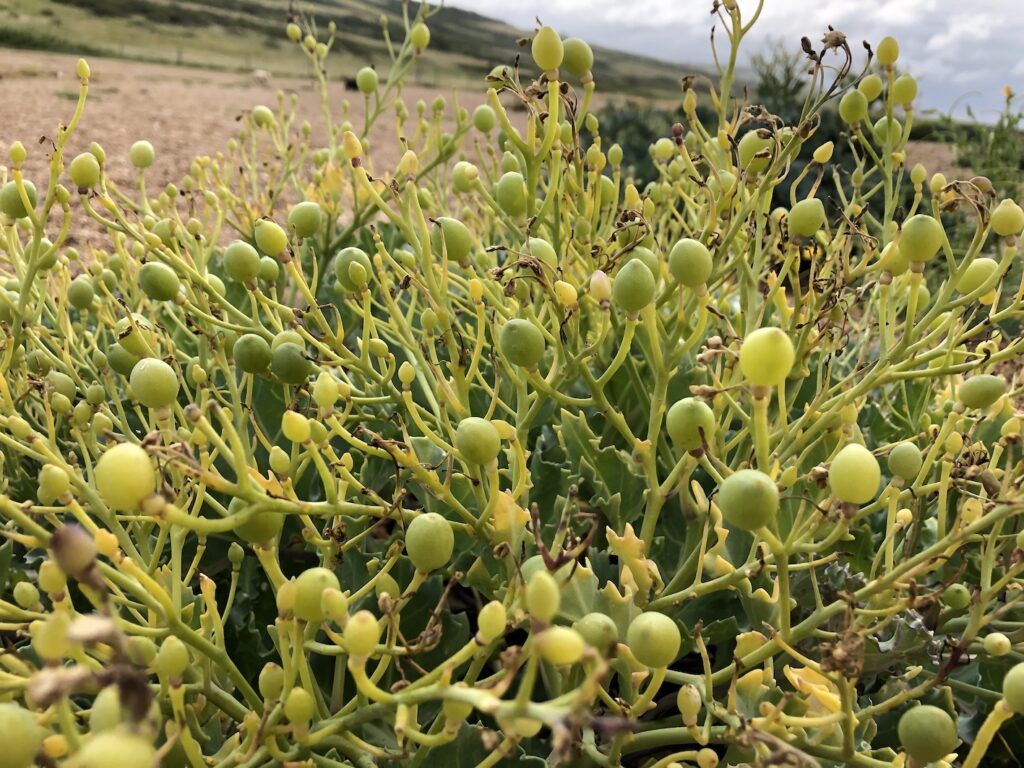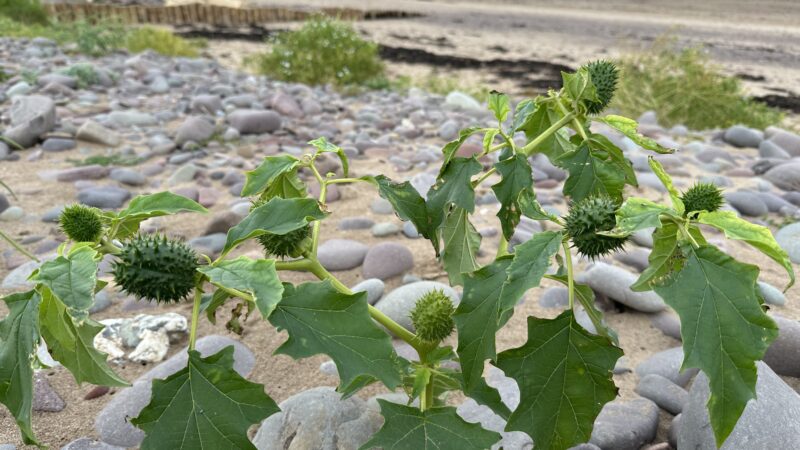Yellow-horned poppies and sea kale on Cogden Beach

Along the drift line on Cogden Beach, where lark song from the meadows meets wave-thunder from the sea, there grows a profusion of plants adapted to coastal conditions.
From June to September, the yellow-horned poppies are in bloom, their large golden-yellow flowers flapping thin as butterfly wings in the salted breeze. The species gets its name from the slim, elongated curving pods, some almost the length of a forearm.
These poppies (Glaucium flavum) are relatively common on sandy or gravel beaches, but it is rare to see so many one place. They form tangled, airy mounds, as if a coven of particularly stylish sea witches have left their bouffant wigs on the shingle while they go for a swim.

Equally numerous are glaucous tumps of sea kale (Crambe maritima). Sea kale is tough and as waterproof as a heavy wetsuit: rub it and it creaks in your fingers. It has deeply ruffled leaves that collect and hold rain long enough for the droplets to become waxed with dust. Its white flowers transform into seaweedy berries on coral-branched stems, pale green and rubber-hard.

Sea beet (Beta vulgaris, subsp maritima) survives here too, its white-veined leaves spiralling and twisting in ragged rosettes. This is the original “colewort”, the wild ancestor of cultivated beetroot, chard and sugar beet. It is good to eat – but these Dorset plants are protected and not for picking. Fortunately, both the kale and beet grow well in gardens and seeds are available online.
Cogden is part of Chesil Beach, a natural stony barrier stretching for 18 miles. Tidal movement sifts the shingle by size from east to west, from potato-sized pebbles at Portland down to gritty sand at West Bay. Being near the western end, Cogden is made of pea gravel, every little stone rounded and smoothed with endless rubbing. It makes a remorseless walking surface because every footstep sinks.
It’s easier to take the coastal path at the back of the beach where the ground is firmer. Here, pink bobbles of thrift (Armeria maritima) nod in the wind and furls of silverweed (Potentilla anserina) creep over the shifting surface, binding the stones with red threads of new growth.
First published in The Guardian Country Diary column 6 July 2022.





